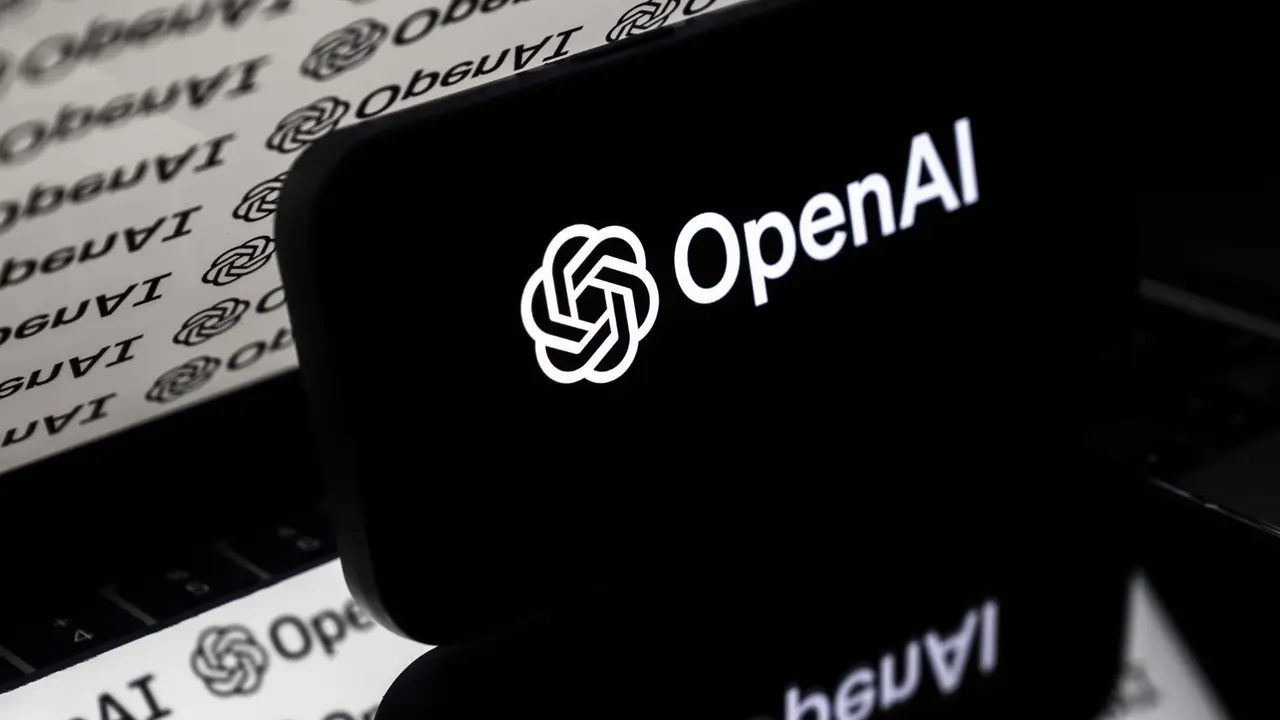Krutrim Launches Kruti: India's First Agentic AI Assistant with Multilingual Capabilities
4 Sources
4 Sources
[1]
Krutrim Launches 'India's First' Agentic AI Assistant Kruti | AIM
It is powered by Krutrim's V2 LLM and enhanced with open-source models for scalable and cost-efficient deployment. Krutrim, a leading AI unicorn, launched Kruti, the country's first agentic AI assistant capable of executing tasks such as cab booking, food ordering, bill payments, image creation, and in-depth research. The tool supports both text and voice input and includes a read-aloud feature. Kruti marks a shift from passive chatbot responses to task-oriented assistance, providing features such as memory, personalisation, and multilingual capabilities, including support for 13 Indian languages. It is powered by Krutrim's V2 LLM and enhanced with open-source models for scalable and cost-efficient deployment. "Kruti is the first real step towards the future of AI where technology doesn't just talk back, but actually helps you get things done," said Bhavish Aggarwal, founder of Krutrim. "We have built Kruti to work the way Indians live: multilingual, mobile-first, and intuitive." Unlike conventional AI tools, Kruti handles tasks end-to-end with minimal user intervention. Users can give commands like "book me a cab to the airport" or "order my usual lunch," and Kruti processes the intent to complete the action. It uses Ola's platform in the backend to deliver the services. Kruti also offers advanced AI features, including research mode and image generation, free of cost. "With Kruti, we take a step ahead in building trust, utility, and a truly Indian AI experience for all," Aggarwal said. The mobility company said personalisation is a core aspect of Kruti's design. The assistant learns user preferences over time and integrates with apps and services for context-aware assistance. Developers can also embed Kruti into their own platforms using its SDK, which simplifies LLM orchestration and tool management. Kruti is powered by agentic intelligence, meaning it uses a network of agents that work together to break down a user's request into smaller subtasks and execute them, sometimes in sequence, sometimes in parallel. The platform uses an agent-to-agent protocol to allow these agents to coordinate and execute plans intelligently. Moreover, MCP (Model Context protocol) allows it to communicate directly with databases or APIs, allowing businesses to integrate their data into Kruti's AI experiences seamlessly. By eliminating the need to switch between apps, presenting responses through summaries, tables, or story formats, and reflecting Indian usage patterns, Kruti aims to reshape how users interact with AI in everyday life.
[2]
What Keeps Team Krutrim Up at Night | AIM
"We're always thinking about how more people can adopt what we are building and how we can build more use cases to make it relevant to everyday lives." Indian startups, alongside the IndiaAI Mission, are focused on creating population-scale impact using AI and exploring use cases that cater specifically to the needs of India. On a similar bid, Bhavish Aggarwal, founder of Krutrim, launched Kruti -- the country's first agentic AI assistant capable of executing tasks such as booking cabs, ordering food, paying bills, generating images, and carrying out in-depth research. The tool supports both text and voice input, includes a read-aloud feature, features 11 Indic languages, and is built on top of Krutrim V2 LLM, which consists of 12 billion parameters. On the sidelines of Kruti's launch event, AIM had the opportunity to catch up with the three leaders behind the project at the Ola campus. Chandra Khatri, founding head of AI; Navendu A, SVP and head of business; and Sunit Singh, SVP of product at Krutrim, spoke in depth about the team's future plans and the upcoming tools in the pipeline. To start off, Navendu clarified a common misconception, explaining that Krutrim V2 is built on Mistral as an architecture, not as a fine-tuned version of it. "Every company has some or the other base architecture," he said, adding that GPT, Llama, and Mistral are built on top of Google's Transformer, and that the Krutrim team aims to be transparent with its technical decisions. "We have made it open source. You can go and see what we have trained," the team added, emphasising that instead of the model, they only took the architecture and then trained it from scratch using their own multilingual datasets. During the launch, Khatri claimed that while most AI assistants in the market focus on narrow tasks or English-speaking users, Kruti is "built for Bharat". He further revealed that Kruti isn't going to remain a consumer-facing tool. In the coming months, the team plans to launch its SDK and API for developers and enterprises to build their own 'Krutis'. "If I run an IT company or an e-commerce platform, I can customise my own Kruti using the same base platform," he said. Kruti supports over 11 Indian languages and can process India-specific visual inputs like Aadhaar, PAN cards, utility bills, and more. The idea is to create an assistant that can cater not only to users familiar with English and digital UIs but also those who interact with tech in their native language -- and often for the first time. Currently, the team claims to have 90% accuracy for agentic use cases. The team is also building voice, image, and several other models. For example, Dhwani and Chitrarth, built from scratch, were designed as part of the Krutrim model family, embedding the same values and capabilities. "Every time a new model comes, you basically have a corresponding image or voice model," Navendu said. The team's training journey started with Krutrim 1 -- a demonstration of their ability to build a foundation model in India, even though the infrastructure used then was foreign. With Krutrim 2, they trained a larger model using their own cloud. "Was it at the stage of DeepSeek or OpenAI? No. Because the size of our infrastructure was smaller," Navendu admitted. "We were looking for very specific use cases." While the original model supports 11 languages, Krutrim plans to scale to 22 soon. "Twenty-three will go in that direction," Khatria confirmed. The company believes AI built for India must be inclusive, covering the country's linguistic, cultural, and digital diversity. Speaking on the current Sarvam controversy around their first model release under the IndiaAI Mission, Navendu said that everyone should be allowed to grow and that this is where the ecosystem can help. "Everyone should have their own time as everyone is doing this for the first time," he said, while adding that Krutrim has an edge as the team started in 2023 and built smaller models. "They [Sarvam] are starting now, and will definitely have their own journeys," Navendu said, adding that all the startups are working together to build AI use cases for India. "There are 800 million smartphone users in India, and only 200 million are in English. The rest are vernacular users. It's not about English. Language is just one parameter. It's also about preferences, thought processes, and cultural nuances. We are building for a complete India." The team strongly believes in collaboration, especially with public and academic initiatives like Bhashini and AI4Bharat. "This is a very big problem. Not one company or government can solve it. We will collaborate with everyone," Navendu further said. "We are talking to IITs. We work with them closely. No one company can solve this, at least at the Indian scale." Krutrim's commitment to the Indian context is not just technical -- it's ideological. The team emphasised that Indian models must reflect Indian thinking, not just translated English. "Are we talking about Indian thought processes or US thought processes? Models have those nuances also. We are taking care of all of them," Navendu said. The team mentioned that much of Krutrim's work is built with Indian developers in mind. While some critics noted that their app's UX looks similar to ChatGPT or Perplexity, they see it differently. "All mobile phones look like Apple. It's about familiarity. People are used to it. So why reinvent the wheel unnecessarily?" Singh added. "We have tried our best to bring in lots of colour, to make it feel magical. Most AI apps are too functional. We've added our own personality." Nevertheless, they understand the challenge. "We're always thinking about how more people can adopt what we are building and how we can build more use cases to make it super relevant to everyday lives." For the Krutrim team, it's not about global rankings -- it's about building something India needs and making sure India uses more AI and adopts it. Singh pointed out that Indians already power much of the AI world. "[Consider] Perplexity, OpenAI -- 30-40% of them (the workforce) are Indians. So it's not like India can't do it. We just need time and support from the ecosystem." "The same thing is happening now that happened with cloud and silicon. We don't want to repeat that. We want to make it work for India -- by Indian developers," Khatri said.
[3]
India needs more infra to train larger AI models, says Krutrim's top executive
Ola's AI arm Krutrim aims to build fast, cost-effective infrastructure as it scales services, despite challenges like limited GPUs and scarce Indic language data. The company plans major investments, is developing a multibillion parameter model, and launched its agentic assistant Kruti, integrating with Ola services and exploring wider sector partnerships.Ola's artificial intelligence arm Krutrim is looking to get its base infrastructure, from semiconductors to hardware, fast and cost-effective as the company scales up its AI services, senior vice-president and head of business A Navendu said. Krutrim, which raised $50 million in 2024, has seen few takers for its AI products due to poor documentation and lack of adequate technical maturity, ET reported earlier this month, citing several developers and startup founders. Navendu, who was previously chief information officer at Ola Electric, told ET that one of the biggest challenges in the country is the lack of infrastructure for training large models, as only 10,000 GPUs are currently available, and the rest of the GPUs under the IndiaAI Mission are still to be delivered. "If you look at (US AI startup) Grok, it is trained on 100,000 GPUs and (ChatGPT developer) OpenAI, 200,000 every quarter. You have to cut some slack for Indian companies," he said. Early this year, Krutrim announced that it would invest Rs 2,000 crore in Krutrim AI labs as part of a total investment of Rs 10,000 crore by next year. The second biggest challenge is data. There is a dearth of Indic language data, said Chandra Khatri, who heads AI at Krutrim. "If you look at data on the web, only 1% of it is Indian languages whereas the Indian population is 20% of the group. If you want to build for India, you need to scrape, digitise, scam and collect data. This is a challenge." The company is working on a multibillion parameter model. To address the compute needs, it will use a mixture of its own and IndiaAI GPUs and will also explore building its own data centres, Navendu told ET. He did not disclose the details. Navendu spoke to ET on the sidelines of the launch of the company's agentic AI assistant Kruti, a consumer application that is autonomous and can take action on behalf of the user. It is currently integrated with Ola's ecosystem offering four services, including cab booking, food delivery, bill payment and image generation, with plans to expand further. The company is also in talks with multiple services across healthcare and shopping use cases. Sunit S, head of product design, said it will also pursue partnerships with ONDC, which offers services such as metro tickets and recharge.
[4]
Krutrim Launches Its Agentic AI Assistant Kruti
Kruti for developers will be launched soon that will help them build and deploy new agents on the platform Ola's artificial intelligence venture Krutrim today unveiled its own agentic AI assistant Kruti. Kruti, a Gen 2 multimodal assistant analyses text, voice, image and files and generates responses and in-depth reports. It is available in more than 11 languages and helps users in ordering food, booking cab and in tasks such as image creation and bill payments. For enterprises, Kruti can leverage data and build experiences by using model context protocols (MCPs) and agent-to-agent protocols The application is available on both Google Play Store and Apple Store, however it is currently in the beta version. Besides, the startups also announced that Kruti for developers will be launched soon that will help them build and deploy new agents on the platform. "We are also expanding Kruti. We have built the Kruti platform as well as Kruti SDK. That's what is powering agents. The same platform and SDK will be exposed to developers," said Chandra Khatri, Head of AI, Krutrim. Founded in 2023, Krutrim offers GPU-as-a-service, model-as-a-service, along with other multiple no-code platforms. It became a unicorn in January 2024 after raising $50 Mn in a round led by Z47 (erstwhile Matrix Partners India). "Kruti listens, adapts, and acts proactively, purposefully, and in your language. This is a leap beyond chatbots." said Krutrim in an X post. Krutrim's Full Stack Approach Krutrim claims to follow a full stack approach by building their silicon chips, cloud and AI foundational models. In April, the AI unicorn said that it has started hosting Meta's Llama 4 models on its cloud platform. Krutrim said that Llama 4 Scout and Llama 4 Maverick will be available for developers to test, build, and deploy applications in the price range of INR 7 to INR 17 per Mn tokens. It also claims to be the first Indian AI company to deploy Meta's Llama 4 models on Indian servers. In January 2025, Krutrim began hosting open source AI models of Chinese GenAI company DeepSeek on its cloud platform. A month later in February, it also deployed DeepSeek's new R1 671B model on Nvidia's H100 graphics processing units in India. Last year, it disclosed plans to develop India's first AI silicon chips by 2026 to manage complex AI tasks and workloads.
Share
Share
Copy Link
Krutrim, an Indian AI unicorn, has launched Kruti, the country's first agentic AI assistant. Powered by Krutrim's V2 LLM, Kruti can execute tasks in multiple Indian languages and marks a shift towards task-oriented AI assistance.
Krutrim Introduces Kruti: India's First Agentic AI Assistant
Krutrim, a leading Indian AI unicorn, has unveiled Kruti, touted as the country's first agentic AI assistant. This launch marks a significant milestone in India's AI landscape, offering a multifaceted tool designed specifically for the Indian market
1
2
.
Source: ET
Advanced Capabilities and Multilingual Support
Kruti stands out with its ability to execute a wide range of tasks, including cab booking, food ordering, bill payments, image creation, and in-depth research. The assistant supports both text and voice inputs and features a read-aloud function. Notably, Kruti offers support for 13 Indian languages, making it accessible to a broader audience across the country
1
3
.Technological Foundation and Agentic Intelligence
Powered by Krutrim's V2 LLM, which consists of 12 billion parameters, Kruti utilizes agentic intelligence. This approach employs a network of agents that collaborate to break down user requests into smaller subtasks, executing them either sequentially or in parallel. The platform uses an agent-to-agent protocol for intelligent coordination and execution of plans
1
2
.Personalization and Integration
A core aspect of Kruti's design is its ability to learn user preferences over time and integrate with various apps and services for context-aware assistance. This personalization aims to enhance user experience and make AI interactions more intuitive for Indian users
1
.
Source: Inc42
Developer Tools and Future Expansion
Krutrim plans to launch an SDK and API for developers and enterprises, allowing them to build their own versions of Kruti. This move is expected to expand the assistant's capabilities across various sectors, including healthcare and e-commerce
2
4
.Related Stories
Challenges and Infrastructure Development
Despite the ambitious launch, Krutrim faces significant challenges in scaling its AI services. The company acknowledges the need for more infrastructure to train larger AI models, citing the limited availability of GPUs in India compared to global tech giants
3
.Investment and Future Plans
Krutrim, which raised $50 million in 2024 and achieved unicorn status, has announced plans to invest Rs 2,000 crore in Krutrim AI labs as part of a total investment of Rs 10,000 crore by next year. The company is also working on developing a multibillion-parameter model and exploring the creation of its own data centers to address compute needs
3
4
.
Source: AIM
Market Position and Competition
As Krutrim positions itself as a pioneer in Indian AI development, it faces competition from other startups and initiatives under the IndiaAI Mission. The company emphasizes its focus on building AI that reflects Indian thinking and caters to the country's linguistic and cultural diversity
2
3
.In conclusion, Kruti's launch represents a significant step in India's AI journey, aiming to provide a locally relevant, multilingual AI assistant. However, Krutrim's success will depend on overcoming infrastructure challenges and effectively scaling its services to meet the diverse needs of the Indian market.
References
Summarized by
Navi
Related Stories
Ola's Krutrim Launches AI Lab and Open-Source Models, Invests Heavily in India's AI Ecosystem
04 Feb 2025•Technology

Ola's Krutrim Announces India's First AI Chip, Set for 2026 Launch
15 Aug 2024

Ola's Krutrim Acquires BharatSah'AI'yak to Enhance AI Solutions for India's Public Sector
20 Jun 2025•Business and Economy

Recent Highlights
1
AI Chatbots Sway Voters More Effectively Than Traditional Political Ads, New Studies Reveal
Science and Research

2
Google AI glasses set to launch in 2026 with Gemini and Android XR across multiple partners
Technology

3
EU Launches Antitrust Probe Into Google's AI Training Practices and Content Usage
Policy and Regulation




